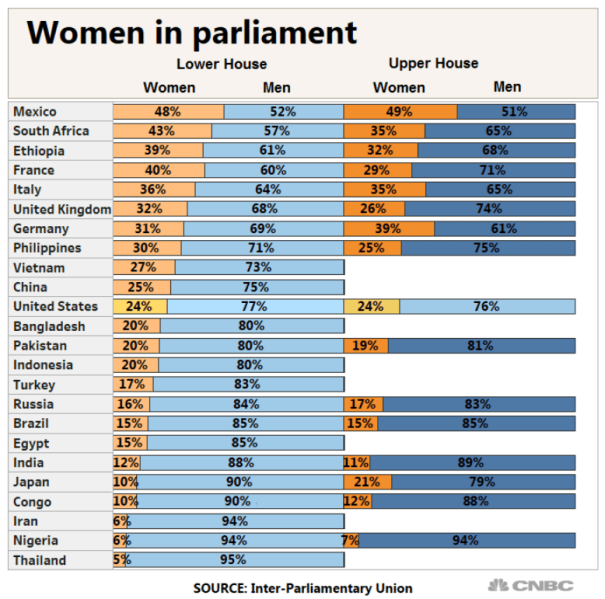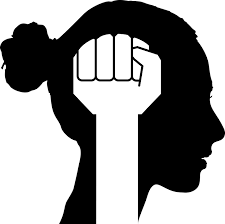Amidst a lot of talks revolving US Polls, Joe Biden and trolling Trump – Kamala Harris – an American politician and attorney, became the first woman and the first woman of color to be elected vice-president of the United States, making USA rank as 75th of the 193 countries when it comes to women representation in parliament. However, on the other hand, India’s position has slipped to 112th place which is definitely a point of discussion today.
Talking about India, have thrown light on operability of many major industries, quickly hop onto how India has seen and upheld its women in Politics, weighing some of the relative positives and negatives. To thoroughly discuss each and every aspect of the ways of Politics, its policies and functioning, we can take up distinctive topics one by one in our subsequent articles as per your feedback and interest; but today we will be concentrating on the overall Women Political statistics, hoping to garner your interest in the Indian Political Scenario as well. So, let’s quickly hop onto how India has seen and upheld its women in
Politics, weighing some of the relative positives and negatives.
Although everyone talks about that women have come at par with men, and the gender gap is majorly decreasing, an interesting point of discussion is why then there is a need of so many quotas and reservations everywhere for women! Why is there a forceful implication across the world that, you know, keeps reminding everyone to include women in the system! Why isn’t it a natural instinct..?! (Yes it’s surely bettering, but am sure it’s sometimes an overwhelming viewpoint for some..)
Having said that, while talking about India, would also like to point out that it should NOT be the case that all women receive special treatment and extra rights such as seats being free of cost for certain sections of women across public transport or while paying taxes etc. The women, who can stand up for themselves and pay, should be allowed to pay or operate. This step into more and more reservations to get the women vote bank on one’s side, according to me, won’t make India an empowered country, instead it might cripple the mind sets of both the genders even more.
- Looking at the bright side of Indian Politics first, the country made an early start in 1925, when Sarojini Naidu became the first female president of the Indian National Congress, the then main Indian nationalist party before and after independence. It was followed by Indira Gandhi becoming the first and the last female Prime Minister of India in 1966, and Praibha Patil, the only female President ever elected for 2007- 2012 tenure. Though there is an abundant room for improvement on the current figures, the number of women in leadership positions across Indian politics has only increased since then.

- Talking about the delta change of Parliamentary seats given to women, from 1970-1980, 4.3% of candidates and 70% of electoral races had no women candidates at all. As of 2013, it has been reported that 11% were women in Lok Sabha and 10.6% in Rajya Sabha. For 2019, as per CNBC, India’s women inclusion in the parliament rounds to about 12% in the lower house and 11% in the upper house, which is not much change than the previous trend.
- Though it is seen with every election, that more women MPs are occupying the center stage, i.e. 78 women MPs were elected to the parliament out of the 700+ female candidates who contested the 2019 general elections, 43% of women coming from a political class. Geneva-based “World Economic Forum (WEF)”, an international organisation for public-private cooperation, reported that 2019’s improvement has largely been ascribed to a significant increase in the number of women in politics! It was quoted in 2019 by WEF that it will take close to 99.5 years to narrow the gender gap, as compared to 2018, where the number of years were calculated to be 108 years! It still means parity between men and women across health, education, work and politics will take more than a lifetime to achieve.
- One of the greatest challenges to closing this worsening economic opportunity gap is women’s under-representation in emerging roles, such as cloud computing, engineering, data and AI, due to which India has slipped to 112th place in 2019 from 98th place in 2006. Another critical point for the slip was also India’s wavering focus towards including women across healthcare and other economic sectors, which during this year, due to Corona, has been somewhat pushed forward.
- Another significant factor is patriarchal attitudes towards female leadership in politics, where women politicians are often seen as fulfilling certain gender-specific roles. An exemplar of this is Indira Gandhi’s rise to the Congress party leadership—a move orchestrated by senior Congress leaders who saw Gandhi as a puppet willing to do their bidding. According to the Economic Survey 2018, other major obstacles faced by aspiring female representatives include domestic responsibilities, female illiteracy, financial disparity, lack of confidence and an increase in threats of violence.
- But having said that, there definitely have been some very influential women in India in the recent times which include the likes of Sonia Gandhi, Sushma Swaraj, Sheila Dixit, Mamata Banerje, Jayalalitha, Mayawati, Vasundhara Raje Scindia, Ambika Soni, Supriya Sule, Agatha Sangma and many more. The kind of work they do, lays ground for how the future of women in India will look like. Women surely have the capability and resources to make a mark in India today; the only need is the initiation and determination to continually do better for the country.
- Thus it is enthralling to see that more and more independent candidates have been fighting their way out in the most controversial seats with women like Remya Haridas, 32, MP from Kerala (second ever Dalit MP) and Pramila Bisoyi, 69, MP from Odisha who belongs to a economically lower class are now representing their constituencies in their parliament.
Hope we see more of women coming to power this upcoming election, who can concentrate on Corona processes yes, but on uplifting the overall development of the economy as well.
Keep following our Facebook and Linkedin pages for interesting updates on critical topics. Combine Ways’s recent Governmental Market Research Studies have lead us to project on some very useful insights revolving India’s Political Scenario across major industries such as Healthcare, Education, Transport, IT/Telecom, Infrastructure/ Utilities and FCG/Agriculture, which shall be discussed in the next article. To get important Market Research & Business Consultancy Services for your upcoming product and service portfolio, visit our website and drop in a message! We shall contact you at the earliest.
